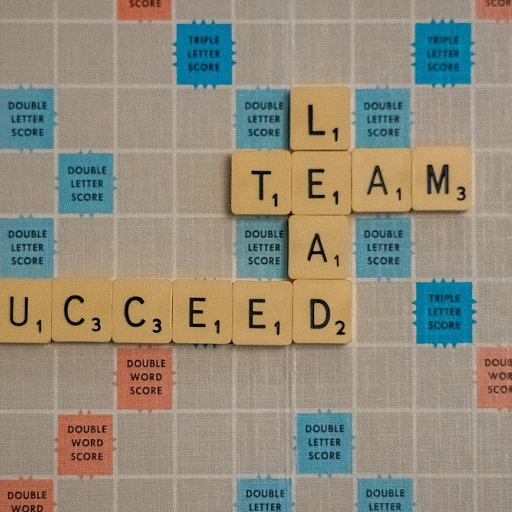
Understanding Performance Culture
The Essence of a Performance-Driven Culture
In today's rapidly evolving business landscape, building a robust performance-driven culture within an organization is not just beneficial—it's essential. Understanding what constitutes a high-performance culture involves recognizing the intricate web of factors that drive employee engagement and elevate company performance. A performance culture isn't solely about pushing employees to work harder; it's about creating an environment where people feel valued and empowered. This culture is nurtured through leadership that exemplifies company values and fosters continuous learning. Leaders play a critical role in setting the tone for the organizational culture, which is pivotal in steering teams towards high performance. Performance management is a cornerstone of any high-performance culture. It facilitates clear and consistent communication between employees and management, ensuring alignment with organizational goals. By focusing on transparent decision making and fostering a sense of purpose, companies can create a work environment where employees feel engaged and motivated to contribute to the organization's growth. Moreover, the characteristics of a high-performing culture reflect long-term commitment to organizational success. These characteristics include a shared vision, collaborative teamwork, and a focus on results rather than mere procedures. When employees are aligned with the company's mission and values, the result is a cohesive unit striving for continuous improvement. Integrating AI solutions can also play a significant role in enhancing a performance culture by streamlining employee policy searches, thereby fostering an environment where employees can perform efficiently without unnecessary hindrances. To explore more about how AI can facilitate this, consider reading about exploring AI solutions for employee policy searches. By understanding and implementing these core principles, organizations can lay the foundation for what will become a thriving, high-performance culture that drives business success.Key Elements of a Performance Culture
Core Components Essential for High Performance
At the heart of developing high performing teams lies a set of vital components that form the foundation of a successful performance culture. When effectively established, these elements foster an environment where employees feel empowered and engaged, leading to sustained business growth.
Leadership and Vision
Strong leadership is imperative for any company aiming to cultivate an organizational culture that excels in performance. Leaders should establish a clear and inspiring vision, encouraging employees to align their work with the organization's ultimate purpose. By communicating company values consistently, leaders create an environment of trust and transparency, which is crucial for a thriving workplace.
Crystal Clear Goals and Expectations
For any performance management system to succeed, employees must be aware of what is expected of them. Setting clear, achievable goals ensures that everyone moves in the same direction. This alignment not only boosts productivity but also enhances employee engagement as individuals understand their roles contribute towards the broader objectives of the organization.
Empowerment and Autonomy
Effective performance cultures empower people to take ownership of their tasks. Encouraging autonomy allows employees to make informed decisions and showcase their creativity. When employees feel trusted, their job satisfaction improves, which positively impacts their performance and the company's overall success.
Continuous Learning and Improvement
A culture of continuous learning is a vital characteristic of high performing businesses. Organizations should foster environments where employees continuously upgrade their skills, contributing to personal and professional growth. This not only enhances their capabilities but also leads to innovative solutions within teams.
For a deep dive into developing resilient performance cultures and strategic growth through continuous learning, consider unlocking the potential of business coaching.
Strategies for Implementing a Performance Culture
Effective Strategies to Foster a Performance-Driven Culture
Establishing a high-performing organizational culture requires strategic planning and implementation. Leaders play a crucial role in this transformation by setting a clear purpose and aligning the company values with that of a high-performance culture. To kickstart this journey, organizations might consider the following strategies:- Communicate a Clear Vision: Leaders must ensure that employees understand the purpose and objectives of the performance culture initiative. This involves transparent communication about the organizational goals and expectations.
- Develop Strong Leadership: Effective performance cultures are often spearheaded by leaders who exemplify the desired behaviors. Leadership should focus on promoting company values and high performance by setting examples through their work and decision-making processes.
- Implement a Comprehensive Performance Management System: Establishing a robust performance management system is key. It involves regular performance reviews and feedback, allowing employees to understand their progress and areas for improvement.
- Encourage Continuous Learning and Development: Fostering a culture of continuous learning will help employees grow and enhance organizational performance. Companies should offer training programs and career development opportunities to support this.
- Promote Employee Engagement: Engaged employees are more likely to contribute to a high-performance culture. Encouraging open communication, empowering employees in decision-making, and recognizing their achievements can significantly boost engagement levels.
- Foster Collaboration and Teamwork: Encourage a collaborative work environment where team members support each other's growth and development. Collaborative efforts often lead to innovative solutions and heightened performance levels.
Challenges in Cultivating a Performance Culture
Overcoming Obstacles in Establishing a High-Performance Environment
Developing a culture of high performance within an organization is a dynamic journey that involves both strategic planning and adaptability. To effectively navigate this complex process, it is crucial to acknowledge the various challenges that may arise in cultivating a performance-focused environment. One significant hurdle is resistance to change. Employees who are accustomed to the current organizational culture might find it challenging to adapt to new expectations and practices. This resistance can often be a barrier to developing high performance. Leaders need to engage employees actively and ensure that they feel part of the transformation process. Encouraging feedback and promoting an inclusive communication strategy can be valuable methods to mitigate resistance. Another challenge is aligning performance goals with company values and objectives. Often, businesses experience a disconnect between their long-term aspirations and the immediate actions of their teams. Bridging this gap requires clear communication from management and a coherent performance management system to foster alignment with the organizational purpose and goals. Leaders should work towards creating high-performing teams that are well integrated with the company values. Maintaining employee engagement is also critical. Ensuring ongoing motivation and drive among employees demands a proactive approach, often necessitating regular performance reviews and recognizing achievements. Encouraging a culture of continuous learning is essential to sustain and enhance employee engagement. When employees feel supported in their growth and development, the organization benefits from increased performance and innovation. Furthermore, providing training for leaders in effective decision-making and leadership skills is another dimension that cannot be overlooked. Empowering leaders to guide their teams towards high performance enhances the organizational culture and impacts employee engagement positively. Finally, ensuring consistency across all levels of the workforce can be challenging, especially in larger companies. It is crucial to establish consistent standards and expectations through defined processes and clear communication to build a coherent high-performance culture. Businesses should focus efforts on aligning departmental goals with the broader organizational goals to sustain growth and success. Addressing these challenges requires dedication and flexibility in management practices, ensuring the foundation of a culture capable of delivering high-performance results. Implementing successful strategies in the face of these challenges can significantly transform a company's organizational culture into one of sustained excellence and effectiveness.Measuring the Impact of a Performance Culture
Assessing the Effects of a Thriving Performance Culture
When an organization commits to building a high-performing environment, the impact can be observed in several dimensions: increased productivity, employee engagement, and overall business growth. For enterprises seeking sustainable success, performance management becomes an essential tool in gauging the outcomes of their efforts.- Productivity and Efficiency: Cultivating a culture of performance leads to a noticeable uptick in employee output. Teams feel motivated by a shared purpose, driving them to enhance their performance in alignment with company values.
- Employee Engagement: A performance-oriented culture fosters a sense of commitment and belonging among employees. When people see their efforts being recognized and rewarded, employee engagement naturally improves, leading to reduced turnover rates.
- Leadership and Decision Making: Leaders play a crucial role in modeling and enforcing high performance through strategic decision making, which strengthens the organizational culture. Their active involvement in the performance review process helps create an environment where continuous learning thrives.
- Long-Term Growth: As performance management gradually becomes embedded in the company's fabric, the company experiences long-term growth. This growth is not only evident in financial metrics but also in the stronger relationships and the commitment of employees towards achieving organizational objectives.












